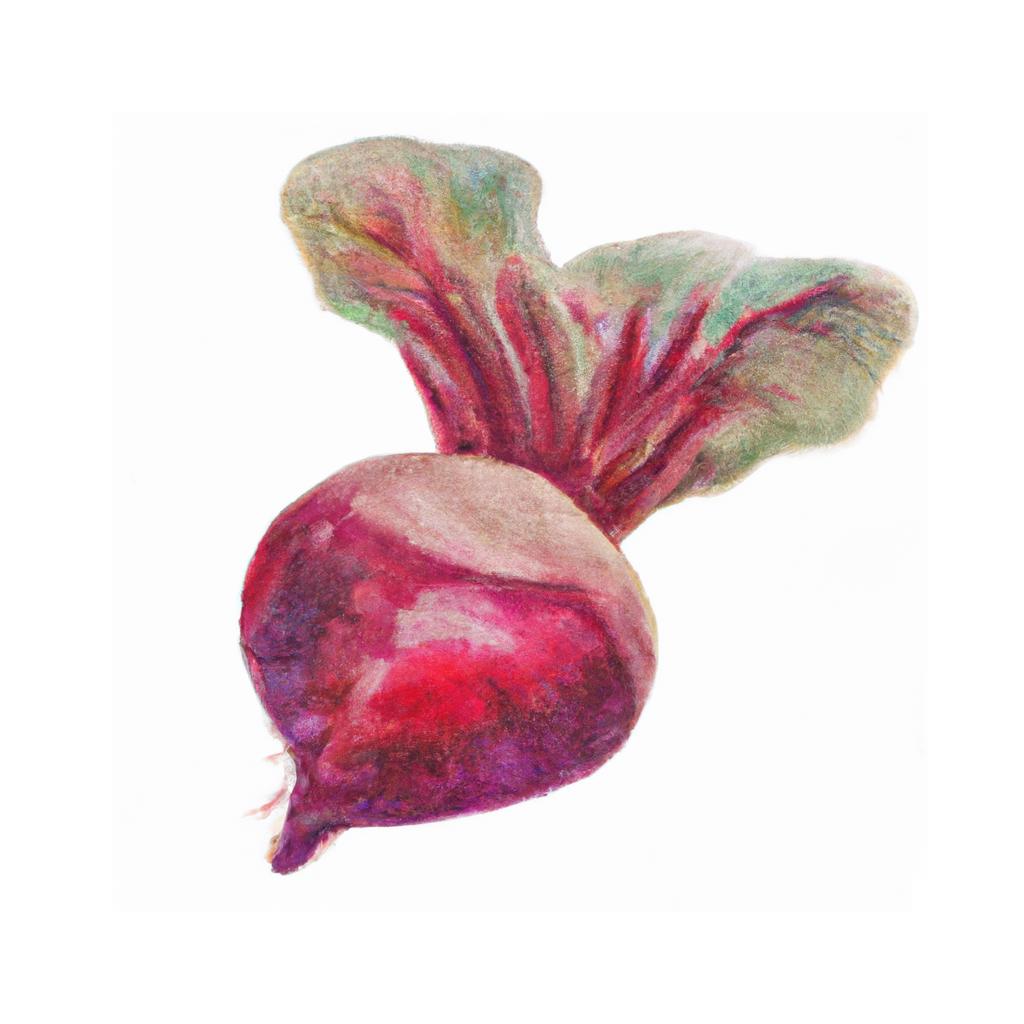
Beetroot, also known as a beet, is a root vegetable with the scientific name Beta vulgaris. Beetroots have been cultivated for thousands of years for their culinary and medicinal uses. They come in various shapes and colors including deep red, yellow, and white, with red being the most common.
The history of beetroot can be traced back to ancient civilizations such as the Greeks and Romans, who valued its health benefits, cooking the leaves and using the roots for medicinal purposes. It has since spread worldwide and played an essential role in European cuisine.
Beetroots are very nutritious and are known for their high levels of vitamins, minerals, and antioxidants. They are known to improve heart health, blood circulation, and support a healthy liver due to their high levels of nitrates, betalains, and other nutrients.
These versatile vegetables can be consumed in various ways. They can be boiled, roasted, steamed or even eaten raw, grated into salads. Some popular dishes made with beetroot include beetroot soup (also known as borscht), pickled beets, and beetroot juice. They pair well with flavors such as goat cheese, dill, and horseradish.
When growing beetroot in your garden, it is essential to ensure well-drained soil and sufficient sunlight. Beetroots are typically planted in the spring or fall and take around 50-70 days to reach maturity. Keep in mind that beet greens are edible too and considered as nutritious as the root itself.
This is advice is most applicable to growers in the UK, you may need to adjust the timings if you live somewhere with a different climate and/or seasons.
| Month | Tasks | Advice |
|---|---|---|
| January | - | - |
| February | sow indoors, | Sow beetroot seeds indoors in trays or small pots, keeping the temperature around 15-20°C for better germination. |
| March | sow indoors, sow outdoors, | Continue sowing beetroot seeds indoors, and start sowing seeds directly outside in well-prepared beds, with rows 30cm apart. |
| April | sow outdoors, plant out, | Sow beetroot seeds directly outside in the prepared bed. Plant out indoor-sown seedlings when they are large enough to handle, spacing them 10cm apart. |
| May | sow outdoors, plant out, thin seedlings, | Sow beetroot seeds directly outside, and plant out any remaining indoor-sown seedlings. Thin outdoor-sown seedlings to 10cm apart. |
| June | thin seedlings, harvest early varieties, | Thin any remaining outdoor-sown beetroot seedlings to 10cm apart. Begin harvesting early varieties when they reach the size of a golf ball. |
| July | harvest, | Continue to harvest beetroot as and when required, avoiding letting them get too big, as they can become woody. |
| August | harvest, | Harvest beetroot regularly, and store any surplus in a cool, dry place for later use. |
| September | harvest, | Harvest any remaining beetroot, ensuring you remove all plants from the ground to prevent pests and diseases. |
| October | - | - |
| November | - | - |
| December | - | - |